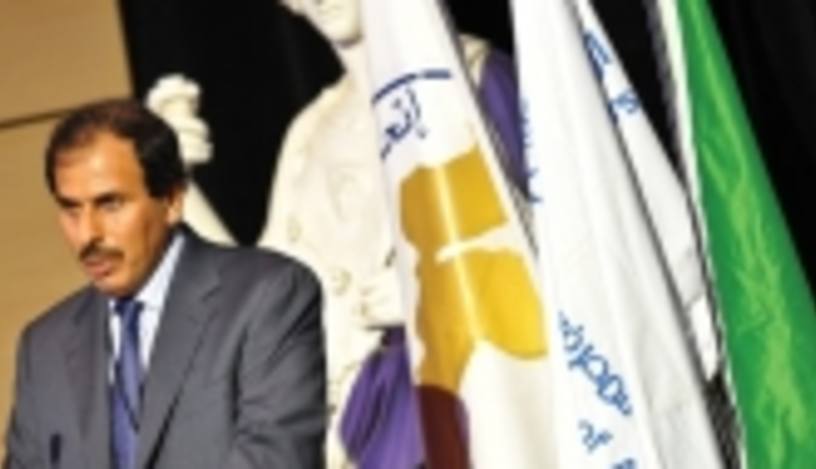Qatar’s banking sector is the envy of many financial markets throughout the world. While Western banks are grappling with shrinking balance sheets, declining revenues, soaring borrowing costs and a dark cloud of economic uncertainty, Qatari banks have been riding the wave of a booming economy.
Editor's choice
The small Middle Eastern country has enjoyed an astonishing run of economic growth, close to 20% for much of the past five years, and clocked the world’s highest growth rate in 2011 with real gross domestic product (GDP) growth of 19%. While the International Monetary Fund is forecasting a slowdown in growth this year to 6% in light of the completion of most of the country’s major liquefied natural gas (LNG) projects, Qatari banks are showing no signs of slowing down.
Infrastructure drive
The roughly $200bn-worth of infrastructure development planned over the next decade is driving the increasing importance of the non-hydrocarbons sector in Qatar’s overall GDP growth. In real terms, the financial services sector is expected to account for the largest share of growth (22%) as it benefits from the considerable financing opportunities for major projects and the positive multiplier effect they will have on the economy.
“The growth in loans and deposits has exceeded our expectations in the first quarter of 2012 and I expect the banking sector to outperform the regional market this year,” says Sheikh Abdulla Bin Saoud Al-Thani, governor of Qatar Central Bank. “There are three sectors in the market that will be the major drivers of growth – healthcare, education and services. The growth used to be driven by hydrocarbons and LNG but their output has now peaked, therefore we expect more growth to come from the private sector. And for [Qatar], that’s a good thing as we want more diversification.”
Indeed, while overall credit growth is expected to slow in 2012, Sheikh Al-Thani foresees an increase in credit demand from the private sector. Total domestic credit growth was running at just over 30%, year on year, in February, with credit to the private sector growing by 16.4%. In particular, Qatar’s successful bid for the 2022 football World Cup has served as a catalyst for the country’s infrastructure plans and broader private sector activity.
The growth in loans and deposits has exceeded our expectations in the first quarter of 2012 and I expect the banking sector to outperform the regional market this year
However, the domestic banking system’s maturity mismatches constrain Qatari banks’ capacity and appetite for longer-tenor sectors such as project finance. Therefore, in preparation for the impending construction boom and given the retrenchment by European banks from the Gulf, Qatari banks are expected to look at new ways of raising financing.
“Our banks are well capitalised but I think bonds and rights issues will be the main methods they will use to expand their capital bases. We expect that as the capital markets grow, banks and other institutions will start issuing corporate bonds. We listed T-bills and we will be listing the government bond in the future, and we’d like the government bond to list either this year or next year but no later than the end of 2013,” says Sheikh Al-Thani. “The government bond can be issued in either its conventional or Islamic form. The listing of this will help establish a proper yield curve – we already have a short-term yield curve but a government bond will help develop a three- to five-year curve, and then we’ll be ready for corporate bond issuance.”
New sukuk launch
On May 10, the Qatari government mandated five banks to help arrange a new sovereign Islamic bond. Its previous foray into the Islamic debt markets in 2003 raised $700m from a seven-year sukuk. The size and date of issuance of the newly planned bond are not yet clear, with discussions having only just commenced. Qatar last tapped global debt markets with a $5bn conventional bond in November 2011, capitalising on investor appetite for safe havens amid market uncertainty. Qatar’s finance minister, Yousef Hussain Kamal, said in March 2012 that the state planned one or two sovereign issuances per year on average to help develop local debt markets.
Another key development in Qatar this year has been Sheikh Al-Thani’s appointment on March 14 to the position of chairman of the Qatar Financial Centre Regulatory Authority (QFCRA) and as the future head of the country’s long-awaited single financial regulator. Plans for this were first mooted in 2007 but the council of ministers finally approved its introduction in early 2012.
The unified financial watchdog will combine the three existing regulators – the Qatar Central Bank, the QFCRA and the Qatar Financial Markets Authority (QFMA), which is the stock market regulator. “I want to pull all the regulatory bodies together so that there is improved coordination between them and we can better manage systematic and non-systematic risks,” says Sheikh Al-Thani. “I am especially keen to harmonise the QFMA and the Qatar Financial Centre. We are currently working on two laws – one is focused on the QFMA and we are also reviewing regulation at the central bank to make improvements in the Islamic banking and payment system fields. I hope to see the new law introduced before the end of 2012.”












